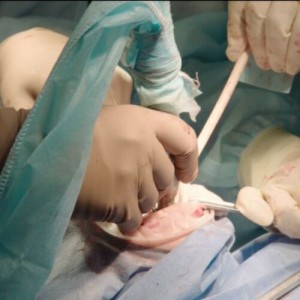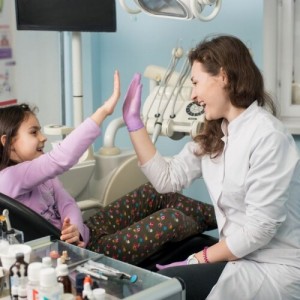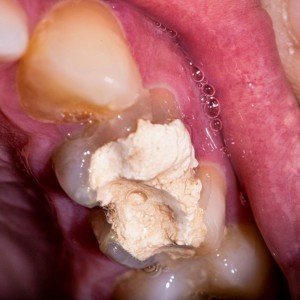
Early Childhood Caries: where does it start?
Alessandra Abbà
Although caries is on the decline in most population groups, early childhood caries (ECC) prevalence continues to be high, especially in low socioeconomic minority groups. Caries is a multifactorial disease with complex and various elements that affect risk for disease. Nevertheless, the mutans streptococci have been recognized as the main etiologic agent involved in the initiation of human dental caries. An important question to solve is the source of initial MS colonization.
The study of Childers et al. analyzed Streptococcus mutans (Sm) colonization and genotypes (GT) between mother and child (M-C) at specific time in a high caries risk cohort. The aim of the authors is to explore the hystory of caries in early dental development and the association with ECC.
MATERIALS AND METHODS
96 African-American infants (average age 1.1 years) and their mothers in a small community setting in Alabama were included in this longitudinal study beginning in March 2008 and followed for 36-months. The mothers had dental examination that were conducted recording decayed, missing, filled surface score (DMFS/dmfs), according to WHO criteria. Plaque sample at the baseline visit and at a two-year follow-up were collected too. Infants/children had plaque samples (i.e., primary molars that had erupted after baseline) collected from all tooth surfaces using sterile toothpicks at each visit. Samples were transferred to the laboratory. Caries outcomes were defined as both binary (yes/no) and count (dmfs score) in children at an average age of four years. Sm isolates were genotyped using repetitive extragenic palindromic-PCR (rep-PCR). Statistical analyses were conducted for associations of Sm in M-C dyads with caries outcomes.
RESULTS
Of 96 infants/children recruited at baseline (average age 1.1 years), only 69 were available for the study after 36 months of follow-up (subject attrition was approximately five percent per year), mostly because of moving out of the community. By the 36-month follow-up visit, 68 children and 66 mothers had at least one Sm isolate from plaque samples available for rep-PCR genotyping. Sm counts from SBS (Saliva and biofilm Sample) of children at 18 month follow-up visit (average age two and one-half years), were found to be significantly different between M-C with matching GT and those that were in the No-Match M-C group (P<.03 Mann-Whitney U test). Plaque Sm plate counts for mothers at baseline was lower in the No-Match M-C group, however was not significantly different (P=.47). The median number of GT observed in both mother and children was two (range one to four and one to seven, respectively). Twenty-seven Sm genotypes (GT) from 3,414 isolates were identified. M-C were categorized as GT Match (N=40) or no-Match (N=29). When modeling the severity of ECC at 36-months (~4 years old), the estimated dmfs in the Match group was 2.61 times that in the no-Match group (P=.014).
CONCLUSIONS
ECC was found to be highly associated with Sm in children, as well as mother’s matching GT. Collected data suggest vertical transmission of Sm in 40 of 69 children that shared GT with their mother, although the possibility that other individuals transmitted the Sm can’t be excluded. Nonetheless, these findings support the importance of the mother's oral microbial status as a reflection of risk for caries.
For additional informations:
Association of Colonization with Streptococcus mutans Genotypes from Mothers and Early Childhood Caries
 Related articles
Related articles
Pediatric dentistry 09 October 2025
Smart materials in pediatric dentistry: Revolutionizing care for enhanced outcomes
In the realm of pediatric dentistry, smart materials are reshaping conventional approaches, introducing a responsive and tailored dimension to treatment.
Pediatric dentistry 24 September 2025
The objective of this study was to survey members of the American Academy of Pediatric Dentistry (AAPD) regarding their use of behavior management techniques.
Pediatric dentistry 08 August 2025
Management of pigmented gingiva in child patient: a new era to the pediatric dentistry
Gingival health in the form of size, shape, consistency and appearance are essential components responsible for an attractive smile as well as may cause unpleasant appearance
Pediatric dentistry 17 July 2025
Pediatric restorative dentistry is a dynamic combination of ever-improving materials and tried-and-true techniques.
 Read more
Read more
Much like EMTs rushing to the scene after an accident, stem cells hurry to the site of a skull fracture to start mending the damage. A new finding has uncovered the signaling mechanism that triggers...
Products 05 November 2025
SimplyTest has launched a groundbreaking saliva-based test to detect high-risk strains of oral human papillomavirus (HPV), a major cause of oropharyngeal cancers.
News 05 November 2025
Perimetrics, Inc., a dental technology company pioneering quantitative diagnostics, announced today that the U.S. Food and Drug Administration (FDA) has granted clearance for the InnerView...
News 05 November 2025
On October 15, open enrollment for Medicare began nationwide. Hundreds of thousands of seniors in New Jersey will once again face the challenge of finding the right Medicare coverage, including the...
Digital Dentistry 04 November 2025
Digitalisation is an expanding field in dentistry and implementation of digital teaching methods in dental education is an essential part of modern education.















